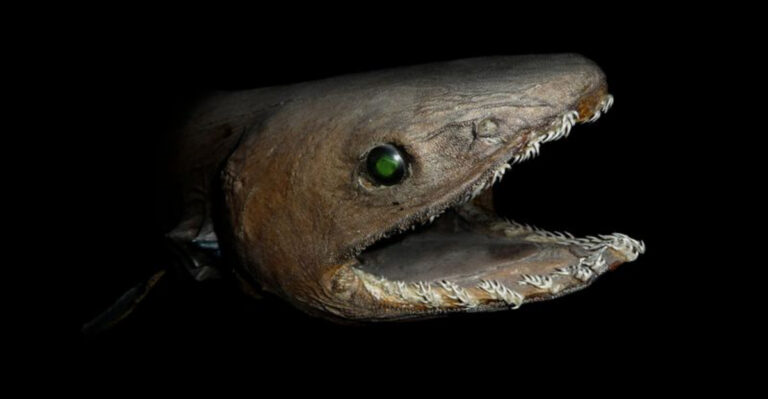12 Shark Species You Might Meet In The Caribbean
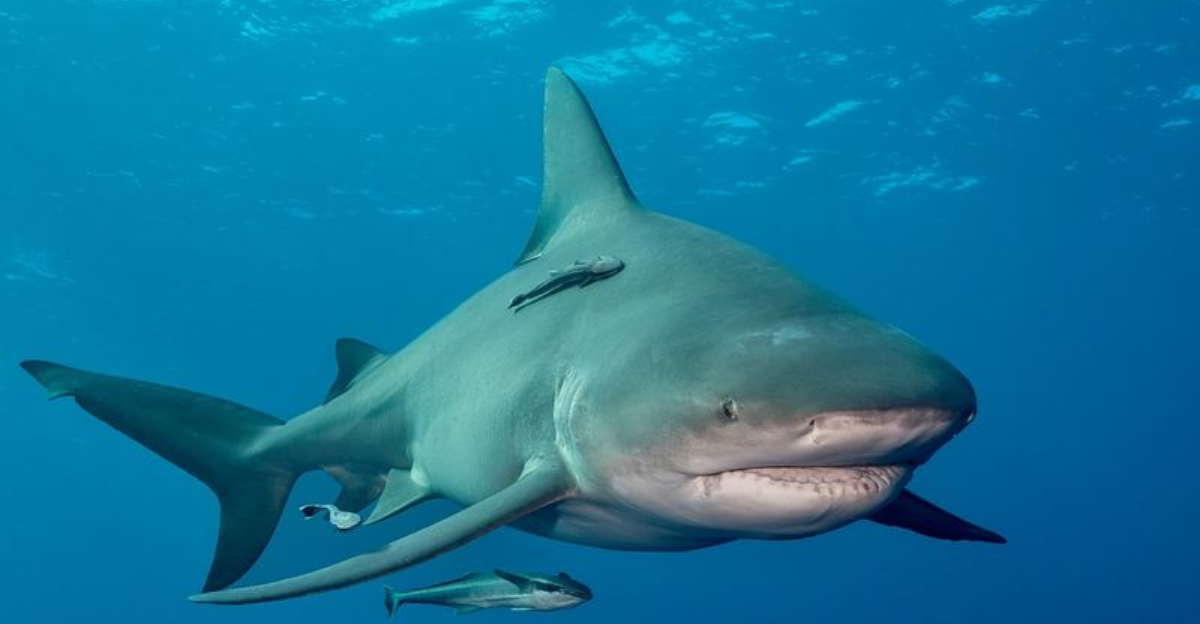
The Caribbean Sea is a shark lover’s paradise, full of surprises beneath the waves. From stealthy hunters to mellow cruisers, these ocean dwellers are as fascinating as they are essential.
This list dives into ten jaw-dropping shark species that call the Caribbean home. Get ready to meet the ocean’s coolest locals!
1. Galapagos Shark
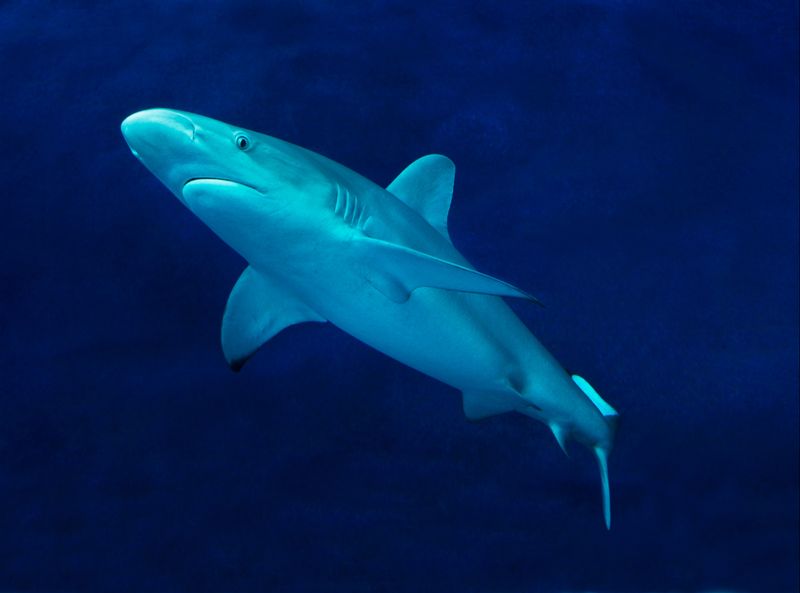
The Galapagos Shark, with its robust body and distinct dorsal fin, is a formidable presence near the Caribbean islands. This shark’s inquisitive nature leads it to explore the waters with a confident grace.
Galapagos Sharks are known for their territorial behavior, often seen patrolling the same areas with unwavering dedication.
Their interactions with other marine life provide a glimpse into the complex social structures beneath the sea.
2. Hammerhead Shark
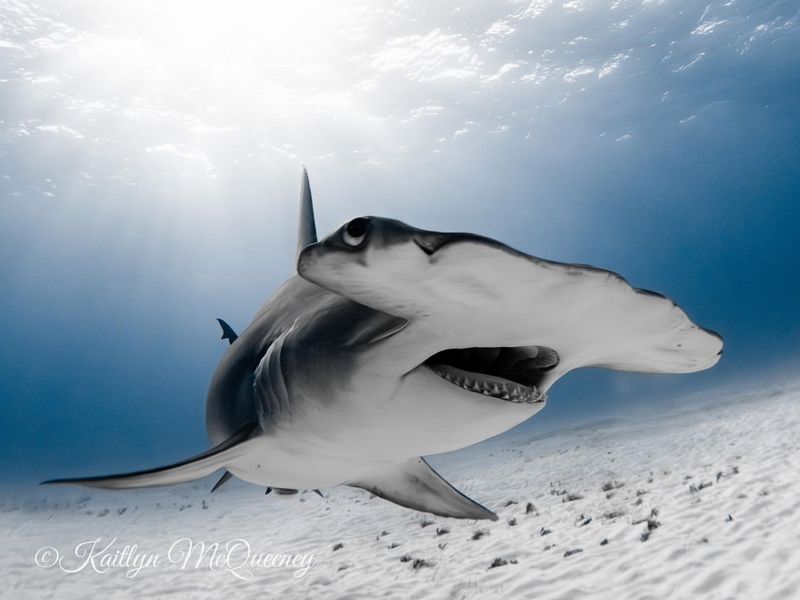
Hammerhead Sharks are total head-turners with their wild, hammer-shaped noggins. That cool design isn’t just for looks—it helps them track down prey like stingrays with serious precision.
They’re some of the few sharks that enjoy a group hang, often seen cruising in schools by day. Their social side and curiosity make them a real treat to watch underwater.
The great hammerhead can hit up to 20 feet long, which is pretty jaw-dropping.
3. Nurse Shark
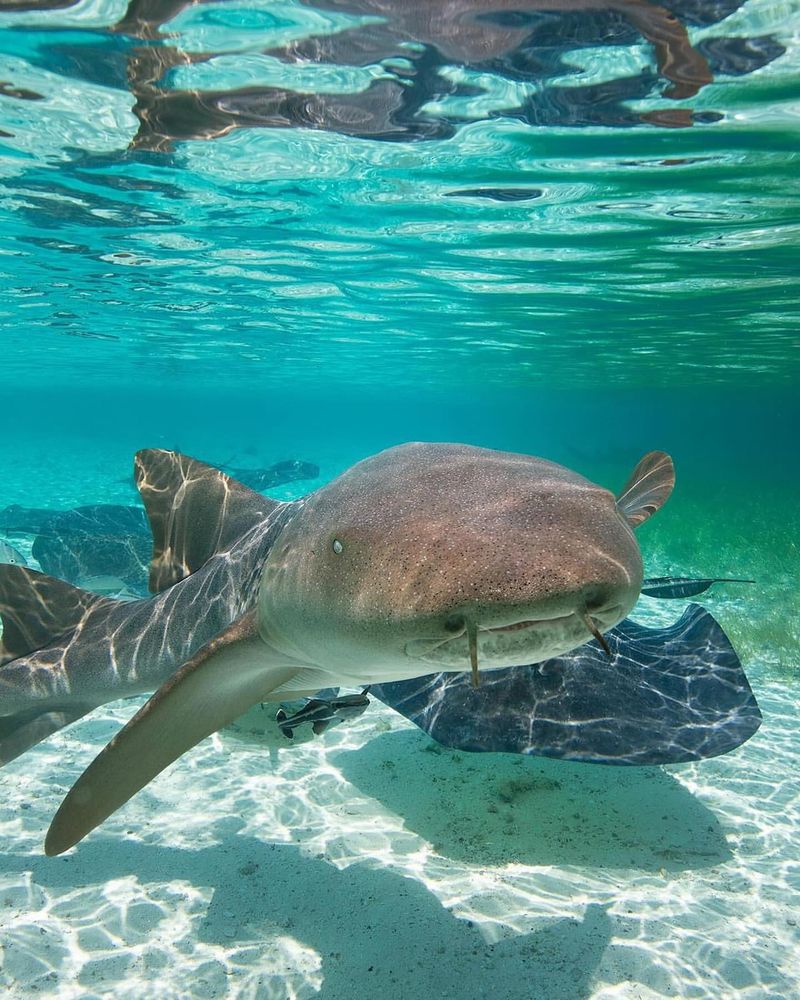
Nurse Sharks are the laid-back loungers of the reef, often found chilling on the ocean floor. With their wide heads and round fins, they’ve got a look that’s hard to forget.
They munch on crustaceans and small fish, crushing them with surprisingly strong jaws. Most of the time, they’re just hanging out under ledges like underwater nap champions.
Even though they can grow pretty big, they’re total sweethearts. They’re not out to cause trouble, just looking for a peaceful spot to snooze.
You might even spot a few piled up together, catching z’s in a cozy shark pile. It’s a vibe.
4. Great White Shark
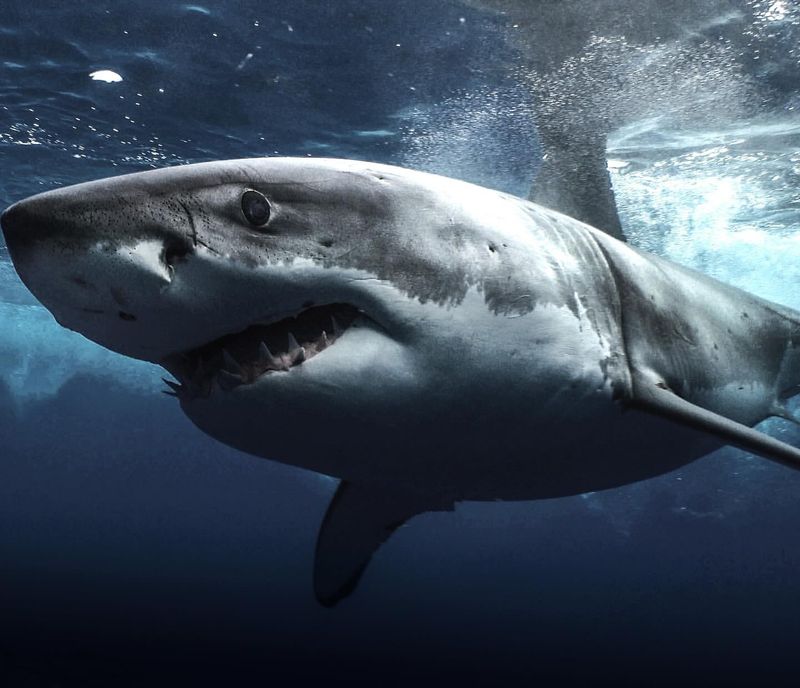
Great White Sharks are the ultimate ocean icons—massive, mysterious, and often misunderstood.
Thanks to movies, they’ve got a scary rep, but attacks on humans are super rare.
These solo hunters can grow over 20 feet and love a menu of seals, sea lions, and leftovers. Their role as apex predators helps keep the ocean in balance.
They prefer cooler waters, so spotting one in the Caribbean is a rare thrill. But wow, what a moment if it happens!
5. Caribbean Reef Shark
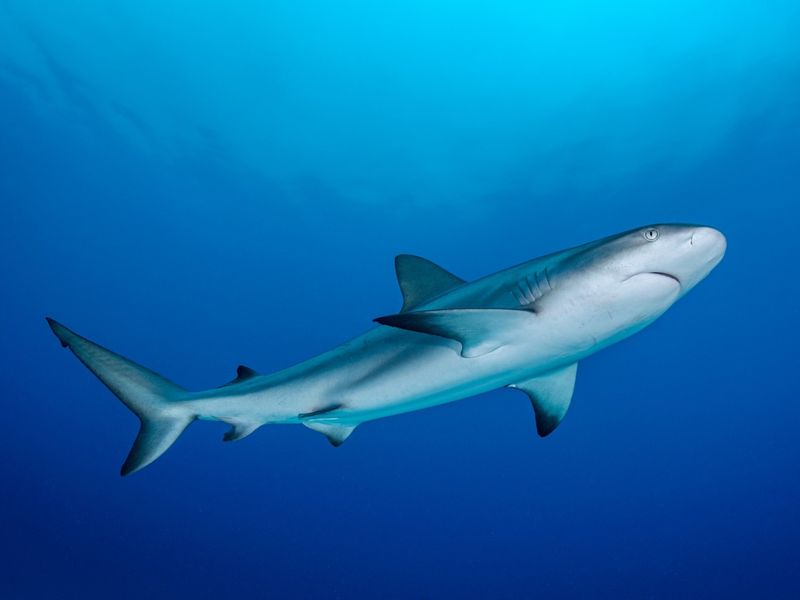
The Caribbean Reef Shark is the definition of cool confidence, gliding through coral reefs like it owns the place.
With sleek bodies and a curious streak, they’re often seen cruising close to divers and snorkelers.
Usually between 6 to 10 feet long, they’re not too big but definitely make an impression. Fish and squid are their go-to snacks, and they help keep reef life in balance.
They’re mostly active at night, but you might spot them during the day too. Don’t be surprised if one swims nearby—it’s just checking you out.
6. Tiger Shark
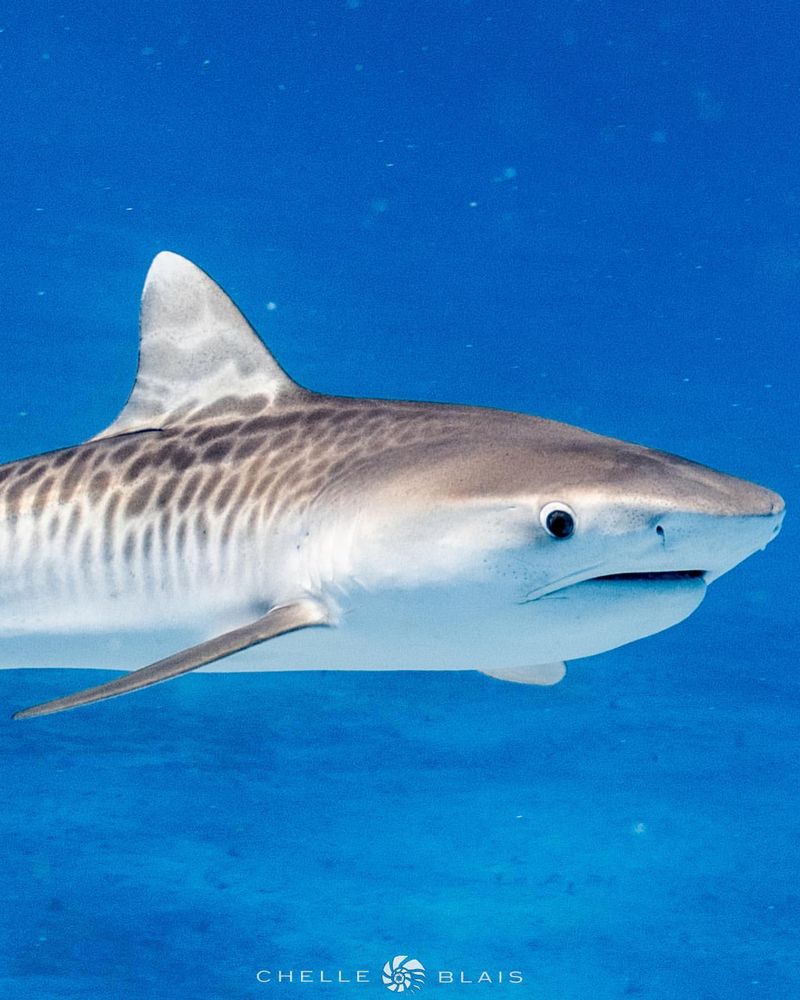
Tiger Sharks are the ocean’s bold, stripe-covered powerhouses with serious mystery vibes. Their dark vertical stripes and massive size make them impossible to miss.
These big guys aren’t picky eaters—they’ll chow down on fish, seals, birds, and even random junk. Think of them as the ocean’s ultimate cleanup crew.
They usually fly solo and can grow up to 16 feet long. Warm tropical waters are their favorite hangout spot.
7. Lemon Shark
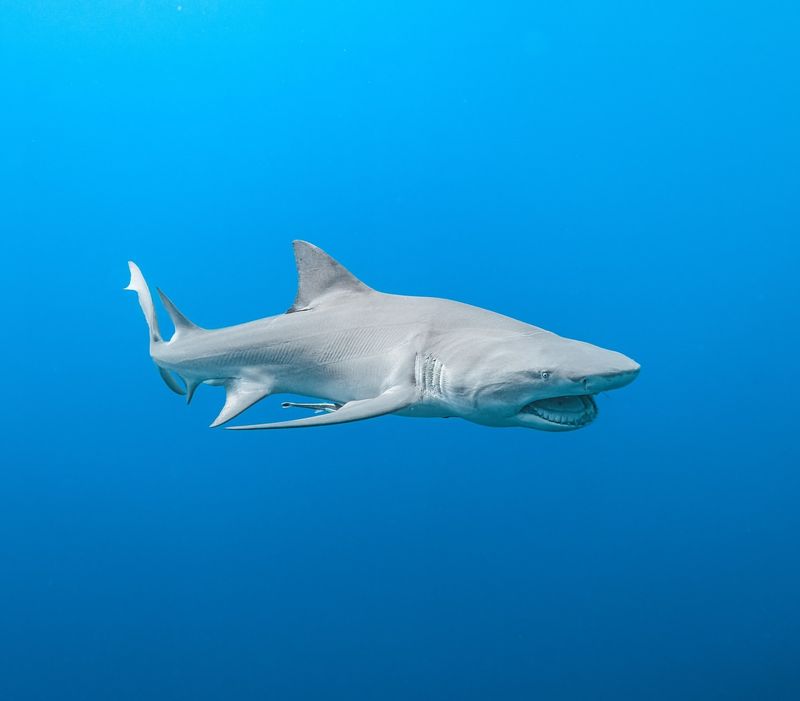
Lemon Sharks rock a yellowish glow that helps them blend into sandy Caribbean shallows. You’ll often spot them near mangroves and lagoons, just cruising along.
They can reach up to 10 feet long and love a good group hang. Fish and crustaceans are their go-to snacks.
Despite their tough look, they’re pretty mellow around humans. Divers sometimes catch them in action during calm, clear swims.
They’re not show-offs, but their social vibes make them fun to watch.
8. Blacktip Reef Shark
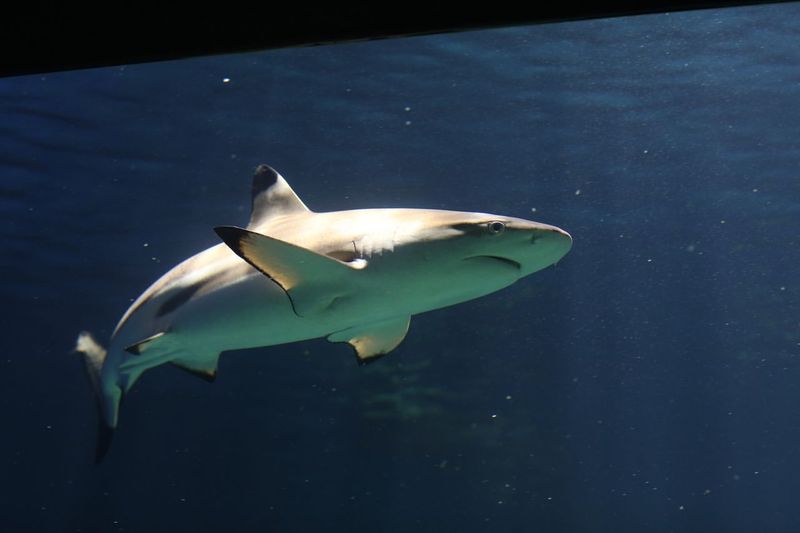
Blacktip Reef Sharks are sleek, speedy, and easy to spot thanks to those bold black fin tips. You’ll often catch them zipping through shallow coral reefs like they own the place.
They snack on small fish, squid, and crustaceans, using fast, sharp moves to strike. It’s like watching underwater acrobatics in action.
These sharks are social and often travel in small squads. Their energy makes them a thrilling part of any dive.
9. Whale Shark
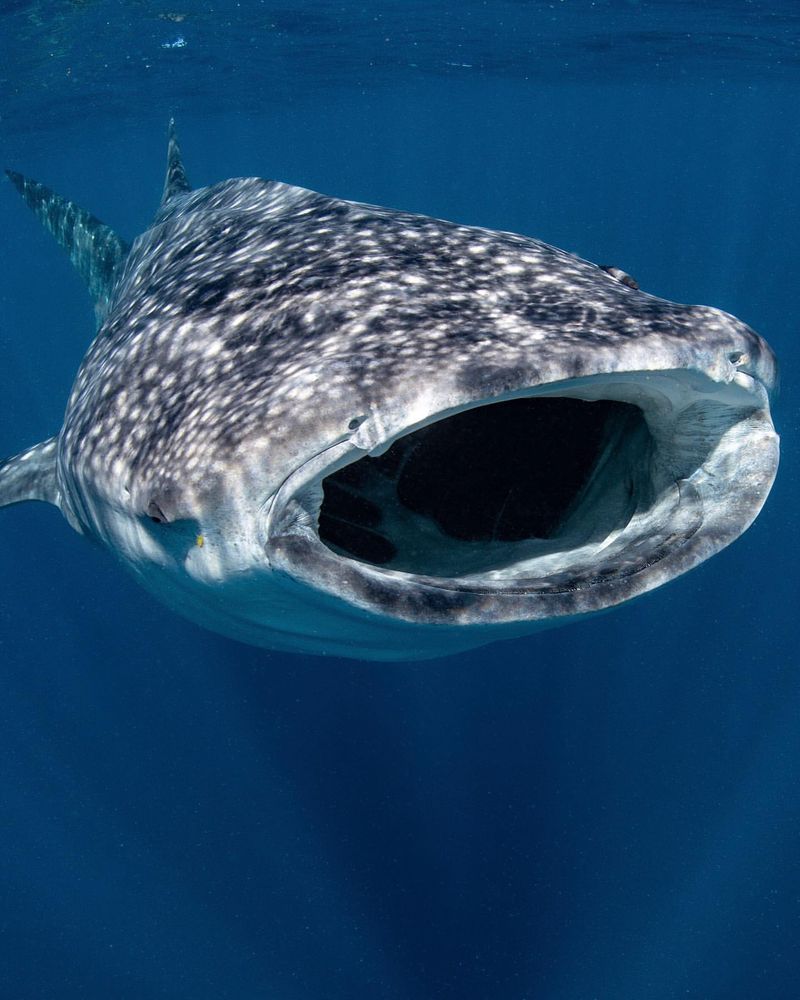
Whale Sharks are the ocean’s gentle giants, stretching up to a jaw-dropping 40 feet long. Despite their size, they’re peaceful plankton-eaters just cruising through warm tropical waters.
Their spotted skin and slow, graceful moves make them easy to recognize—and impossible to forget. Sometimes they gather in small groups when there’s a good meal around.
Swimming near one feels like floating beside a moving submarine. No fear needed—these filter feeders are totally harmless.
10. Oceanic Whitetip Shark
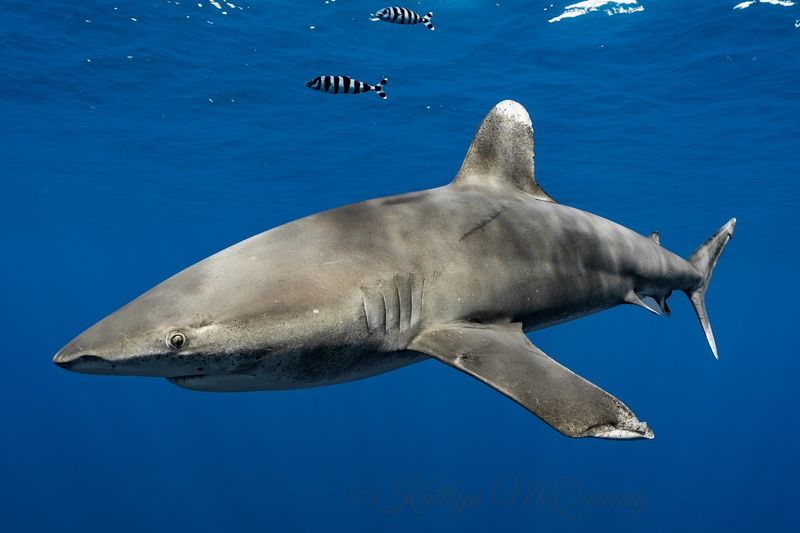
Oceanic Whitetip Sharks are sleek, bold wanderers with bright white fin tips that stand out in the deep blue.
You’ll find them far from shore, gliding through open Caribbean waters like they own it.
They grow up to 11 feet and move with a slow, confident swagger. Their menu? Squid, fish, and pretty much anything that drifts their way.
These sharks have a bold streak, which gives them a fierce reputation. But really, they’re just curious opportunists doing their thing.
11. Bull Shark
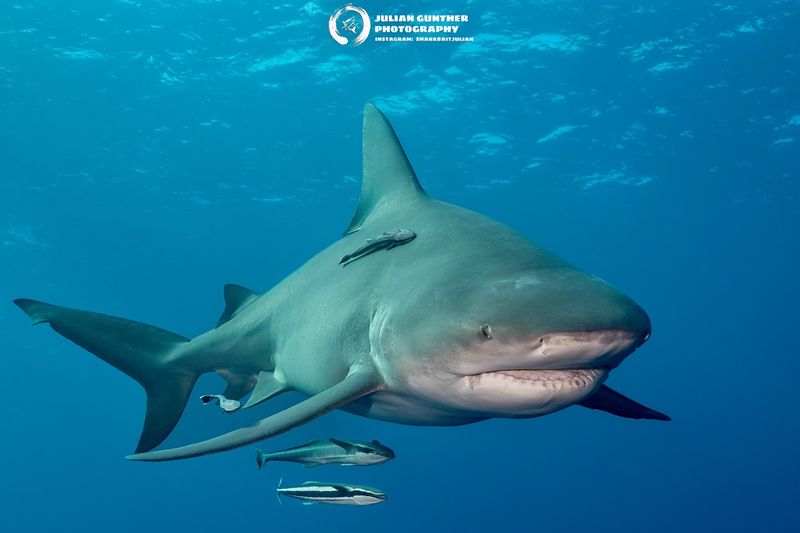
Bull Sharks are the tough guys of the shark world—bold, adaptable, and built like tanks. They can swim in both saltwater and freshwater, even venturing into rivers!
With their stout bodies and blunt snouts, they can grow up to 11 feet long. Their menu is wild—fish, dolphins, and even other sharks.
Because they’re not shy about shallow water, they’re more likely to cross paths with people. That boldness is part of their reputation.
12. Caribbean Sharpnose Shark
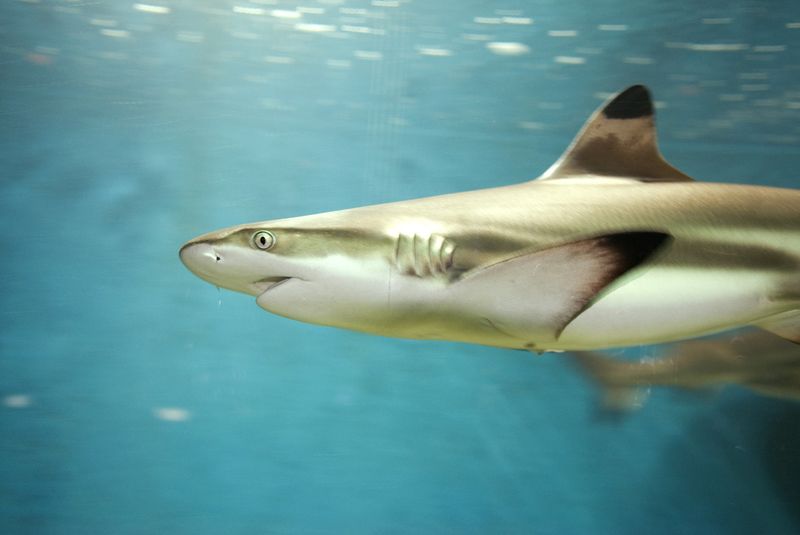
The Caribbean Sharpnose Shark is a small but fascinating resident of these tropical waters.
With its slender body and pointed snout, it weaves effortlessly among the coral reefs, showcasing agility and precision.
Despite their small size, these sharks play a crucial role in maintaining the health of the reef ecosystems. Their lively nature and constant movement make them an exciting sight for snorkelers and divers alike.

